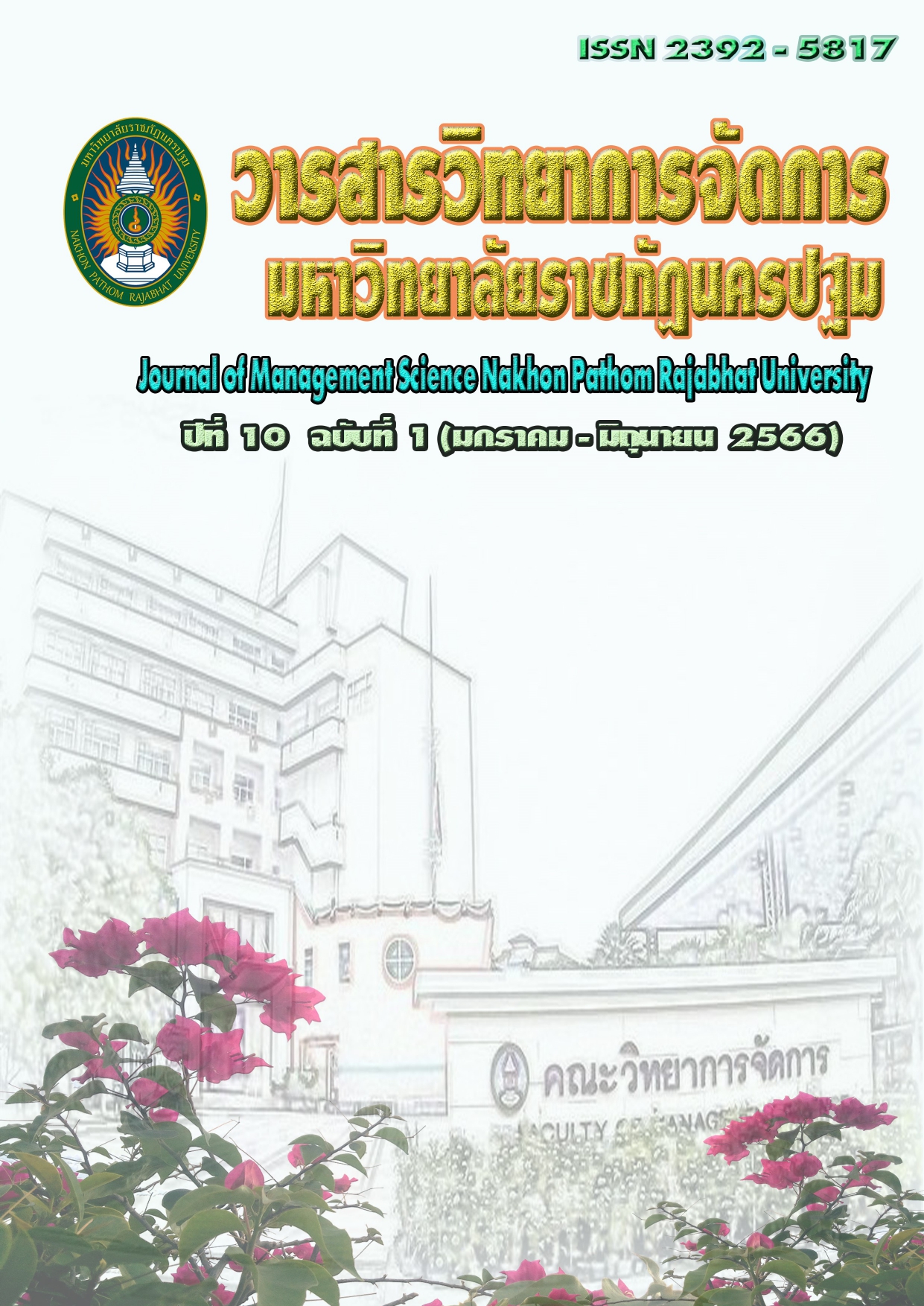Telecommuting in the COVID – 19 Pandemic Situation in Thai Public Organizations
Main Article Content
Abstract
The objectives of this research were to investigate the readiness of telecommuting in the COVID-19 pandemic situation in Thai public organizations and its effects on organizational productivity and personnel’s job satisfaction. The researcher adopted a multiple-case-study qualitative research methodology. The cases comprised 2 departments in the Ministry of Agriculture and Cooperatives (MOAC): the Office of the Permanent Secretary and Royal Irrigation Department (RID). Data collection included the conduct of in-depth interviews with 42 key informants as well as documentary research, participant observation and non-participant observation. Data were analyzed, classified, and synthesized across cases.
The research findings were as the following:
1) The readiness of telecommuting in the COVID-19 pandemic situation in Thai public organizations comprised 5 components: (1) the readiness of organization’s leader in terms of decision-making and innovative leadership; (2) the readiness of organizational change; (3) the readiness of personnel’s telecommuting skills; (4) the readiness of organization’s technological support including hardware and secure connection; and (5) the readiness of telecommuting workplace.
2) The readiness of telecommuting had an effect on personnel’s job satisfaction. Jobs that were appropriate for telecommuting included those which could be replaced or supported by digital technology; for instance, approval or consultation tasks, service delivery, administrative and academic tasks. However, engineering and hydrology were considered unsuitable for telecommuting. Despite telecommuting has induced the lack of interaction among co-workers and supervisors, public organizations provided work supervision and monitoring, fair welfare and compensation, according to rules and regulations in times of teleworking. Explicit telecommuting policy and its regular policy revision had led to personnel’s job satisfaction.
3) The readiness of telecommuting had an effect on organizational productivity. Public organizations applied digital technology in order to reduce work processes and service time which resulted in customers’ satisfaction, budget savings and values. Consequently, telecommuting had an influence on public organizations’ efficiency and effectiveness; in other words, telecommuting caused organizational productivity.
Article history: Received 15 March 2023
Revised 16 April 2023
Accepted 17 April 2023
SIMILARITY INDEX = 2.17%......................
Article Details

This work is licensed under a Creative Commons Attribution-NonCommercial-NoDerivatives 4.0 International License.
The views and opinions of the article appearing in this journal are those of the author. It is not considered a view and responsibility of the editorial staff.
References
กระทรวงวิทยาศาสตร์และเทคโนโลยี, สำนักงานนวัตกรรมแห่งชาติ. (2555). การจัดการนวัตกรรมสำหรับผู้บริหาร (Innovation management for executives--IMEs). (พิมพ์ครั้งที่ 3). กรุงเทพมหานคร: สำนักงานนวัตกรรมแห่งชาติ
วลัยพร รัตนเศรษฐ และ สมศักดิ์ วานิชยาภรณ์. (2564). บทบาทของภาครัฐในการบริหารจัดการกับการแพร่ระบาดของโควิด-19. กรุงเทพมหานคร: คณะรัฐประศาสนศาสตร์ มหาวิทยาลัยธุรกิจบัณฑิตย์.
Agdalen, L. and Lehtisalo, S. (2019). Telework and job satisfaction. Liv Agdalen, Sara Lehtisalo: Stockholm Business School.
Atzeni, P., Mecca, G., and Merialdo, P. (1998). Design and maintenance of data-intensive websites. Heidelberg, Germany: Springer-Verlag.
Boeri, T., Caiumi, A. and Paccagnalla, M. (2020). Mitigating the work-safety trade-off. Covid economics: Vetted and real-time papers, 1(2). 60–66.
Johnston, R. (2013). Service productivity: Towards understanding the relationship between operational and customer productivity. International Journal of Productivity and Performance Management. 53(3), 201-213.
Kaliski, B. S. (2007). Encyclopedia of business and finance. (2nd ed., Vols. 2). Detroit, MI.: Thompson Gale.
Lugtu Jr., R. (2021). Work-from-home - are workers truly productive? The Manila Times. Retrieved April 18, 2021 from https://www.manilatimes.net/2021/05/27/business/top-
business/work-from-home-are-workers-truly-productive/1800805
Nilles, J. M. (1998). Managing telework: Strategies for managing the virtual workforce. (Vol. 6). New York, NY.: Wiley.
OECD Policy Response to Coronavirus (COVID-19). (2020). Productivity gains from teleworking in the post COVID-19 era: How can public policies make it happen? Retrieved April 18, 2021 from https://www.oecd.org/coronavirus/policy-responses/productivity-gains-from-teleworking-in-the-post-covid-19-era-how-can-public-policies-make-it-happen-a5d52e99/
Scarpello, V., and Campbell, J. P. (1983). Job satisfaction: Are all the parts there? Personnel Psychology. 36(3), 577-600.
Turcotte, M. (2010). Working at home: an update. Canadian social trends. Retrieved January 15, 2021, from https://www150.statcan.gc.ca/n1/pub/11-008-x/2011001/article/11366-eng.htm
Yasenov, V. I. (2020). Who can work from home? Retrieved January 15, 2021, from https://www. healthaffairs. org/topics.
Yin, R. K. (2015). Qualitative research from start to finish. (2nd ed.). New York: Guilford Press.

